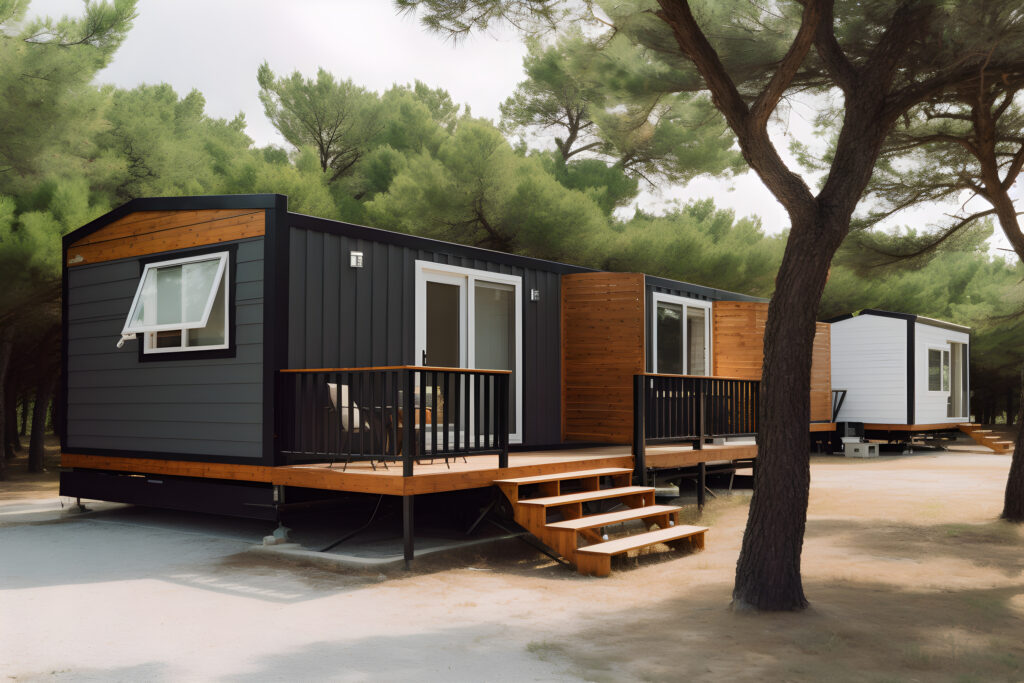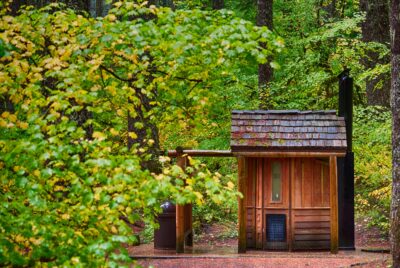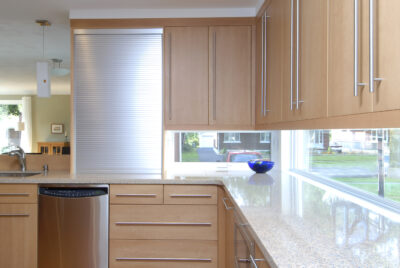Tiny House Living, Mobile Homes, or THOWs? Which is Right for You?
Are you dreaming of downsizing, simplifying your life, or embracing a more minimalist lifestyle? If so, you’re not alone. Many individuals are seeking alternative housing options that offer affordability, flexibility, and a sense of freedom. In this article, we’ll dive into the world of tiny house living, mobile homes and THOW’s (tiny homes on wheels), exploring the differences between these two unique housing options and helping you decide which one is right for you.
Introduction: Understanding Your Tiny House Living Housing Options
Picture this: a cozy tiny house nestled in the countryside, surrounded by nature’s beauty. Or perhaps, envision a mobile home on wheels, ready to take you on adventures wherever the road leads. Both tiny houses and mobile homes offer a departure from traditional housing, providing compact living spaces with a world of possibilities. But which one is the best fit for your lifestyle and preferences? Let’s find out.
1. Tiny House Living: Embracing Minimalism
Imagine living in a space where every square inch is carefully designed to maximize efficiency and functionality. That’s the essence of tiny house living. These pint-sized dwellings, typically ranging from 100 to 400 square feet, offer a minimalist lifestyle that prioritizes simplicity and sustainability.
What is a Tiny House?
A tiny house is more than just a small dwelling; it’s a way of life. These homes are often custom-built or DIY projects, featuring clever space-saving solutions and innovative design elements. From loft bedrooms to fold-out furniture, tiny houses are all about making the most of limited square footage.
Benefits of Tiny House Living
So, why choose a tiny house? For starters, they’re incredibly affordable. With lower construction costs and minimalistic living expenses, tiny houses offer a path to financial freedom for many individuals. Plus, their small size means less energy consumption and a reduced environmental footprint. And let’s not forget the customization options. From rustic cabins to modern masterpieces, tiny houses come in all shapes and styles, allowing homeowners to express their unique personality and preferences.
Cost and Types of Tiny Homes?
• DIY Tiny Home: The starting cost of a tiny home can vary significantly depending on factors such as size, materials, location, and customization options. Generally, the cost of a basic, DIY tiny house build can range from as low as $10,000 to $30,000. This budget typically covers essential expenses such as building materials, tools, permits, and labor if you choose to build it yourself or hire contractors for specific tasks
• Professionally Built: For professionally built tiny homes, prices tend to start around $30,000 to $50,000 for a basic model with standard features. However, more luxurious or customized tiny homes can cost upwards of $100,000 or more, especially if they include high-end finishes, custom design elements, or specialized features like off-grid capabilities or smart home technology.
• Prefab Tiny Kit Homes: The cost of prefab kit tiny homes can vary depending on factors such as size, features, materials, and the manufacturer. Generally, prefab kit tiny homes offer a convenient and relatively affordable option for those looking to simplify their living space. They start at around $20,000 for smaller models with essential features and finishes. Mid-range kits with customization options may range between $30,000-$60,000. Some manufacturers also offer off-grid capabilities. Luxury tiny home pre-fab kits with higher end finishes, appliances and technology can cost upwards of $60,000 to $100,000 or more.
• Customized Shipping Container: The cost of building a tiny house using shipping containers can vary depending on factors such as size, design complexity, location, and the extent of customization. Generally, using shipping containers as the primary building material can offer a cost-effective and sustainable alternative to traditional construction methods. Containers are either 20’ or 40’ long and 8’ wide. You can use one or if more space is needed, they can be combined both horizontally and vertically. They start at $10,000 and can go as high as $200,000 or more depending on size and customization
It’s essential to carefully review the specifications and pricing of tiny homes from different manufacturers, builders and suppliers to find the best option that fits your budget and lifestyle requirements. Additionally, keep in mind that additional expenses such as delivery, assembly, and site preparation may also contribute to the overall cost of purchasing and setting your tiny home.
It’s also essential to consider additional expenses such as land acquisition, utility hookups, furnishings, and ongoing maintenance costs when budgeting for a tiny home. Overall, the starting cost of a tiny home can vary widely based on individual preferences and requirements.
2. Mobile Homes: Embracing Mobility

Advantages of Mobile Home Living
Now, let’s shift gears and explore the world of mobile homes. Unlike tiny houses, which are typically stationary, mobile homes offer the ultimate freedom of mobility. These manufactured dwellings, also known as trailers or manufactured homes, can be moved from one location to another, allowing homeowners to explore new places and communities with ease.
What is a Mobile Home?
Think of a mobile home as a cozy retreat on wheels. These homes are built in factories and transported to their final destination, where they can be permanently placed or remain mobile. With sizes ranging from single-wide to double-wide, mobile homes offer more space and amenities compared to tiny houses, making them a popular choice for families and retirees alike.
So, why opt for a mobile home? For starters, mobility is a huge selling point. Whether you’re a digital nomad or a retiree looking to explore new horizons, mobile homes offer the flexibility to pick up and go whenever the mood strikes. Plus, they’re surprisingly affordable. With lower upfront costs and financing options available, mobile homes provide an accessible entry point to homeownership for many individuals. And let’s not forget the sense of community. Mobile home parks often offer amenities such as swimming pools, clubhouses, and social events, fostering a tight-knit community of like-minded individuals.
Comparing Size, Design, and Mobility
When it comes to size, design, and mobility, tiny houses and mobile homes couldn’t be more different. Tiny houses are all about compact living, with every inch of space carefully curated to maximize efficiency. In contrast, mobile homes offer more square footage and amenities, making them a better fit for families or individuals who crave a bit more space. And while tiny houses are typically stationary, mobile homes can be moved from one location to another, offering the ultimate freedom of mobility.
- Single-Wide Mobile Home: Typically 14 to 18 feet wide and 60 to 80 feet long. The average cost is between $30,000-$80,000 depending on size, age and location. There are nice design options and features available.
- Double-Wide Home: Usually around 20 to 32 feet wide and 60 to 80 feet long. The average cost ranges between $50,000 to $120,000, depending on size, features, and location. Higher end design and features than that of the single-wide.
- Triple-Wide Home: Typically 24 to 36 feet wide and 60 to 90 feet long. The average cost ranges between $80,000 to $200,000, depending on size, amenities, and location. It is delivered in 3 pieces and assembled on site. A triple wide is much more difficult and challenging to move so if one of your key factors to mobility and flexibility, this option may not be for you!
- Park Model Homes: Generally around 12 to 16 feet wide and 35 to 45 feet long. The average cost ranges between $20,000 to $60,000, depending on features and location. They offer efficient layouts with a variety of finishes and features.
Financial Considerations: Cost and Investment
Now, let’s talk money. When it comes to affordability, both tiny houses and mobile homes have their advantages. Tiny houses are often cheaper to build and maintain, with lower construction costs and minimalistic living expenses. However, their small size means limited appreciation potential compared to traditional homes. On the other hand, mobile homes offer more square footage for your buck, making them a better long-term investment for some individuals. Plus, with financing options available, mobile homes provide an accessible entry point to homeownership for many people.
Lifestyle Considerations: Customization and Community
Choosing between a tiny house and a mobile home isn’t just about square footage and affordability; it’s also about lifestyle preferences. Tiny house living offers a sense of freedom and self-sufficiency, with homeowners embracing minimalist living and off-grid capabilities. Mobile home living, on the other hand, is all about community and convenience, with amenities such as swimming pools, clubhouses, and social events fostering a tight-knit sense of community.
Practical Considerations: Legal and Regulatory Factors
Before diving headfirst into tiny house living or mobile home ownership, it’s essential to consider the legal and regulatory factors. Zoning laws and building codes vary from one location to another, impacting where you can park your tiny house or place your mobile home. Additionally, mobile home parks may have their own set of rules and regulations, so be sure to do your research before making a decision.
Making Your Decision: Evaluating Your Needs and Preferences
So, which housing option is right for you? It all comes down to your individual needs and preferences. Do you crave simplicity, sustainability, and off-grid living? A tiny house might be the perfect fit. Or perhaps you value mobility, community, and convenience? In that case, a mobile home could be the ideal choice. Ultimately, the decision is yours to make, so take your time, weigh the pros and cons, and choose the housing option that aligns with your lifestyle and values.
Can’t Decide Between a Tiny House and a Mobile Home? THOW Could be for You!
3. What is THOW Living?

Tiny homes on wheels, also known as THOWs, offer a unique and mobile approach to minimalist living. Let’s delve into the world of these compact dwellings, exploring their features, benefits, and design options. The concept emphasizes simplicity, sustainability, and freedom, offering an alternative to traditional ownership.
Size and Cost of Tiny Houses on Wheels?
The average Size ranges from 100 to 400 square feet, with variations in length, width
and height and the average Cost starts at around $20,000 for DIY builds and can go up
to $100,000 or more for professionally constructed models.
Benefits of THOW’s
- Mobility: Tiny homes on wheels (THOWs) offer unparalleled mobility, allowing them to be easily transported to different locations. This feature makes them ideal for individuals or families who desire a nomadic lifestyle, enabling them to explore new destinations and change their surroundings as desired.
- Affordability: One of the significant advantages of THOWs is their affordability. With lower construction costs and minimalistic living expenses, tiny homes on wheels provide an affordable housing option for those seeking to downsize or minimize their living expenses while still enjoying a comfortable and functional living space.
- Sustainability: THOWs contribute to a reduced environmental impact through their small footprint, energy-efficient design, and use of eco-friendly materials. By embracing sustainable practices and principles, occupants of tiny homes on wheels can minimize their carbon footprint and live more eco-consciously.
Design Options - Customization: Tiny homes on wheels offer endless possibilities for customization, allowing individuals to tailor their living space to suit their unique preferences and lifestyle needs. From floor plans and layouts to interior finishes and fixtures, customization options abound, enabling occupants to create a personalized and functional living environment.
- Space-Saving Solutions: Despite their compact size, THOWs are designed to maximize usable space through clever design features such as loft bedrooms, fold-down tables, and multipurpose furniture. These space-saving solutions ensure that every square inch of the tiny home is optimized for functionality and comfort.
- Stylish Interiors: Modern finishes, sleek fixtures, and creative storage solutions enhance the aesthetic appeal of tiny homes on wheels. From chic interiors to innovative storage solutions, occupants can enjoy stylish and comfortable living spaces that reflect their unique tastes and preferences.
Important Considerations Prior to Committing - Legalities: Before committing to living in a tiny home on wheels, it’s essential to research local zoning laws and regulations regarding THOWs. These regulations vary by location and may impact where and how the tiny home can be parked or resided in.
- Lifestyle Adaptation: Transitioning to tiny home living requires adjustments in mindset, lifestyle habits, and possessions to embrace minimalism and maximize space. It’s essential to consider whether this lifestyle aligns with your values and preferences before making a commitment.
- Maintenance: Regular maintenance and upkeep are necessary to ensure the longevity and functionality of a tiny home on wheels. From plumbing and electrical systems to exterior maintenance, ongoing care and attention are essential to keeping the tiny home in optimal condition.
Lifestyle - Freedom: Tiny homes on wheels offer occupants the freedom to travel, explore new destinations, and live closer to nature. This sense of freedom and flexibility enables individuals to live life on their terms, experiencing new adventures and creating lasting memories along the way.
- Minimalism: Embracing a minimalist lifestyle promotes mindfulness, simplicity, and a focus on experiences rather than possessions. By downsizing and decluttering, occupants of tiny homes on wheels can prioritize what truly matters to them and live more intentionally.
- Community: The tiny house movement fosters a sense of community among like-minded individuals through gatherings, workshops, and shared resources. By joining this community, occupants of tiny homes on wheels can connect with others who share their values and interests, fostering meaningful relationships and support networks.
Conclusion: Finding Your Ideal Home
In conclusion, whether you’re drawn to the simplicity of tiny house living or the mobility of mobile homes, or the combination of both, tiny homes on wheels (THOW) there’s a perfect housing option out there waiting for you. By understanding the differences between these three unique options and evaluating your needs and preferences, you can make an informed decision about your next home. They all provide a unique opportunity to live simply, sustainably, and adventurously. Whether you’re seeking a cozy retreat, a nomadic lifestyle, or a way to minimize your environmental footprint, Start exploring your housing options today and embark on the journey to finding your perfect home. So, what are you waiting for?




